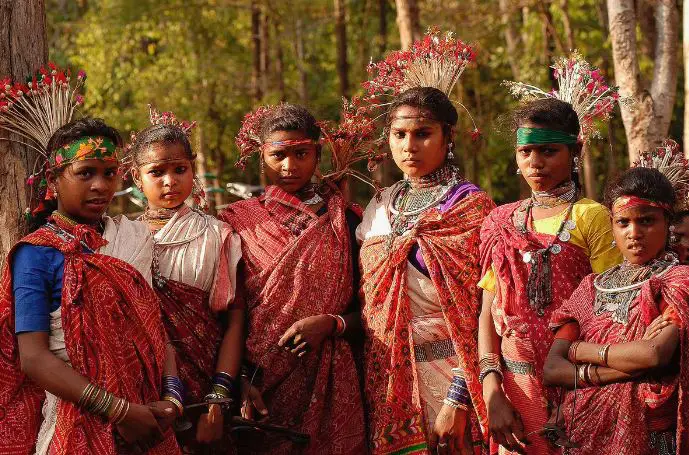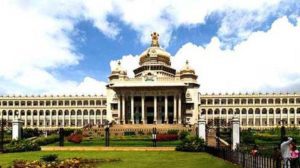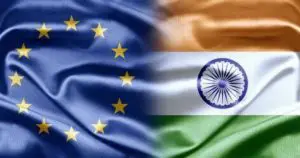Table of Contents
Particularly Vulnerable Tribal Groups (PVTGs) | UPSC – IAS
Particularly Vulnerable Tribal Groups (pvtg) – (earlier it was – Primitive Tribal Groups) was the category with in Scheduled Tribes created on recommendation of Dhebar commission.
- Presently there are 75 tribal groups categorized by Ministry of Home Affairs as Particularly Vulnerable Tribal Groups (pvtg)
- PVTGs reside in 18 States and UT of A&N Islands.
- The Central government is planning to reimpose Restricted Area Permit (RAP) in the North Sentinel island where an American was killed by members of the Sentinelese tribe.
Issues and News | UPSC – IAS
Due to security reasons, certain areas have been declared as Protected Area/Restricted Areas where no foreigner can enter or stay without obtaining permit from the competent authorities.
- Under the Foreigners (Restricted) Areas Order, 1963, parts of Sikkim and entire Andaman & Nicobar Islands have been declared as `Restricted’ Areas.
- Under the Foreigners (Protected Areas) Order, 1958, all areas falling between the ‘Inner line’ and the International Border of the State have been declared as ‘Protected Areas’.
- Currently Protected Areas are located in- all of Arunachal Pradesh and Sikkim, parts of Himachal Pradesh, Jammu and Kashmir, Manipur, Mizoram, Nagaland, Rajasthan and Uttarakhand.
- The North Sentinel island is one of 29 islands for which government had relaxed the RAP in order to promote tourism and boost employment opportunities.
Tribes of Andaman & Nicobar | UPSC – IAS
- There are 6 aboriginal tribes in Andaman & Nicobar islands belonging to two broad groups of Negrito and Mongoloid. Except Nicobarese (Mongoloid), the rest 5 are recognizes as Particularly Vulnerable Tribal Groups (PVTGs) i.e. Sentinelese (Negrito), Great Andamanese (Negrito), Ongs (Negrito), Jarawas (Negrito) and Shom Pens (Mongoloid).
- Sentinelese: They the only remaining tribe in the Andamans to still maintain their isolation from the rest of the world and live like hunter gatherers.
- o They are connected to the Jarawa on the basis of physical, as well as linguistic similarities.
- o Both Sentinelese men and women do not wear clothes.
- Great Andamanese: The great Andamanese is a collective term used for 10 different tribes that lived in most of the large islands in the Andaman.
- They are also known for their brave History where they fought with bows and arrows with the English men who tried to occupy their land (The Battle of Aberdeen).
- Today most tribes are extinct and their cultural and linguistic identities largely been lost. (e.g. their members now speak mostly Hindi).
- Jarawa: Jarawas continue to be hunting and gathering nomadic tribe and are often hostile to outsiders.
- Men fish with bows and arrows in the coastal waters while women catch fish with basket.
- Onge: They are hunting and gathering tribe settled at Dugong Creek and South Bay on Little Andaman Island.
- Shompen: The Shompens are primarily hunter-gatherers and also practise a little bit of horticulture and pig rearing.
- Nicobarese: They are largest of tribes and are primarily horticulturalists.
Issues being faced by the Particularly Vulnerable Tribal Groups (pvtg) | UPSC – IAS
These tribes have faced social disintegration among them with cultural erosion in the wake of contacts.
- Diseases: Some expeditions to establish contact with these tribes have led to spread contagious diseases among them.
- Disasters: The islands inhabited by these tribes are often faced with natural disasters such as the Tsunami of 2004. Also, global warming has been putting pressure on these areas.
- Unsustainable and exploitative tourist influx in the region has led to serious problems for these tribes and for the region too. Outsiders coming mainly from Tamil Nadu and West Bengal have outnumbered these tribes.
- Loss of food: Loss of forests, overfishing, etc. has diminished their food sources.
A Way Forward :- | UPSC – IAS
Protect Cultural Heritage:
- Extensive efforts must be made to ensure that their customs, languages, religious practises etc. are not lost as a result of outside influence.
- The ANTRI (Andaman and Nicobar Tribal Research and Training Institute) has been set up with an objective of formulation of policies for tribal integration and protection of PVTGs
Prevent Forced contact:
- It is important that security apparatus is stepped up and the region is properly policed and protected from any outsiders – fishermen, tourists or evangelicals.
- The A&N (Protection of Aboriginal Tribes) Regulation, 1956 provides protection to the aboriginal tribes by declaring their traditional areas as reserves and prohibited entry of all persons except those with authorisation.
- With regard to Sentinelese tribes, the A&N Administration has adopted an ‘eyes-on and hands-off’ policy to ensure that no poachers enter into the island.
Provide Basic Social Services:-
- Health Services, Basic education, etc. must be provided to the tribes that are being assimilated in the mainstream. Specific issues like natural disasters, endemic diseases such as anaemia, etc. must also be attended to.
- The Ministry of Tribal Affairs is implementing the “Development of PVTGs” scheme which covers the 75 identified PVTGs among Scheduled Tribes in various states/UTs.
Promote sustainable Economic activities:
- Development of cottage industries, plantations crops (e.g. coconut), fishing, animal husbandry etc. are some viable economic options given the fact that there is not much scope for agriculture.
- Sustainable tourism activities like adventure sports, deep sea diving, etc can be promoted without putting the tribes at danger from outsider contact.
- Tackling ecological Issues such afforestation, coral bleaching, sewage discharge,etc should also be of high priority.




